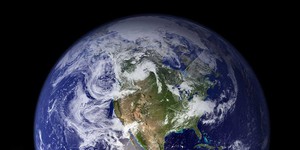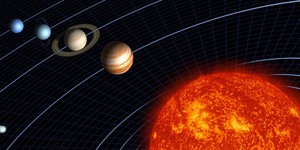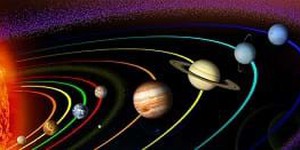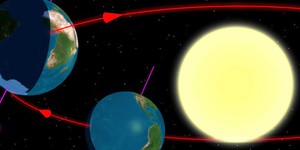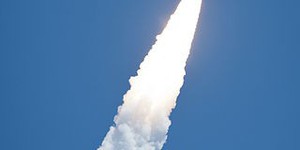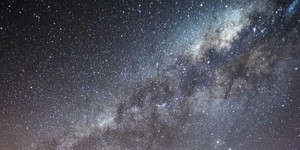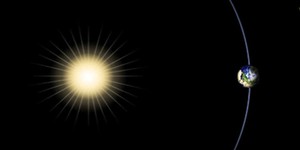Astronomy Lesson Plans (10 results)
Astronomy is science that will challenge your imagination. How many stars in a galaxy? How many galaxies in the known universe? How many strange worlds are out there on other planets, orbiting other stars, and what are they like? Is there life on planets besides Earth? The distances are mind-boggling; the numbers are immense.
|
Select a resource
Sort by
|
Lesson Plan
Grade: 6th-8th
5 reviews
This hands-on science lesson will help your students get a more accurate view of the solar system by making a scale model. They will do the calculations, make model planets, and find out where to place them so their model reflects reality. Seeing the relative size of the eight planets and their distance from the Sun displayed before them will allow your students to grasp the structure and vastness of the solar system.
Read more
NGSS Performance Expectations:
Lesson Plan
Grade: 6th-8th
6 reviews
Why can we feel gravity pull us down towards the Earth, but not sideways towards other big objects like buildings? Why do the planets in our solar system orbit the sun instead of flying off into space? In this lesson plan your students will develop a model for gravity and use it to explore answers to these questions.
Read more
NGSS Performance Expectations:
New
Lesson Plan
Grade: 6th-9th
In this lesson plan, students will model the complex biologic manufacturing process. First, they will model the cellular expansion process that occurs in a bioreactor. Then, students will lyse the cells to isolate the proteins from the dyed cell debris. Lastly, they will model the advanced filtration process to purify proteins so they can be used as medicines.
Read more
NGSS Performance Expectations:
Lesson Plan
Grade: 3rd-8th
2 reviews
Many of the misconceptions about our solar system are rooted in the fact that it is large and hard to comprehend. This kinesthetic activity will demonstrate concepts like rotation and orbit, clarify movement and direction, and help students understand why earthlings see different things in the sky.
Read more
Lesson Plan
Grade: 3rd-8th
4 reviews
>
How much space is in space? Students build a simple model and practice fractions to see how much space exists between different objects in our solar system.
Read more
Lesson Plan
Grade: 6th-8th
Students explore orbit transfers and, specifically, Hohmann transfers. They investigate the orbits of Earth and Mars by using cardboard and string. Students learn about the planets' orbits around the sun, and about a transfer orbit from one planet to the other. After the activity, students will know exactly what is meant by a delta-v maneuver!Engineering Connection
Aerospace engineers must be creative when planning the best routes and methods to send a spacecraft from…
Read more
NGSS Performance Expectations:
Lesson Plan
Grade: 3rd-8th
This kinesthetic activity demonstrates to students that the Earth's tilt is what is responsible for shifting light patterns and the change in seasons.
Read more
Lesson Plan
Grade: 3rd-5th
1 review
Students are introduced to the engineering challenges involved with interplanetary space travel. In particular, they learn about the gravity assist or "slingshot" maneuver often used by engineers to send spacecraft to the outer planets. Using magnets and ball bearings to simulate a planetary flyby, students investigate what factors influence the deflection angle of a gravity assist maneuver.
Read more
NGSS Performance Expectations:
Lesson Plan
Grade: 3rd-8th
1 review
Constellations have been used for centuries for navigation and time keeping. In this interactive lesson, students will learn the difference between their sun sign and their birthday stars.
Read more
Lesson Plan
Grade: 3rd-8th
1 review
You'll be surprised at how many misconceptions you can debunk by modeling the phases of the moon with a light and a styrofoam ball!
Read more
Lesson Plan
Grade: 3rd-8th
2 reviews
In this interactive lesson, students will use kinesthetic techniques to model Earth's orbit around the Sun for a year.
Read more
|





